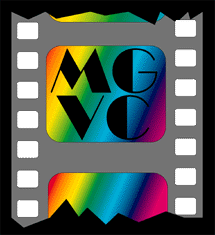(2022, 398 min)
Country: U.S.
Director: Andrew Rossi
Studio: NetFlix
Language: English
SYNOPSIS: Face value has never had a more accurate appraisal than the accumulated works of Andy Warhol. Early in The Andy Warhol Diaries, the artist at the center shows his colors. “If you didn’t have fantasies, you wouldn’t have problems,” Warhol says. The mask he wore never covered the mascara he always felt he needed. Warhol didn’t like his skin, the shape of his nose, his receding hairline, or his asexual façade. He says he’d always wanted to be a robot, unemotional, detached, and ageless. The six-part documentary gives him that, but infuses the machine with affection.
The main narrator of The Andy Warhol Diaries is Andy, but not. Along with layered readings by Bill Irwin, Andy’s words are translated by a Warhol-bot, an artificially intelligent vocal algorithm machine which inadvertently highlights how much the art celebrity would have enjoyed the current age of everyday stardom. Warhol was the man who said everyone will have their fifteen minutes of fame, and technology and reality TV conspired to make that commonplace. For better or worse, he could take pride in the worlds he helped usher into consciousness. Even his robot AI voice has emotional growth, and allows fluctuating undertones to seep into the silk screen. The re-enactments feature a Warhol double filmed from behind, which suits the AI-Warhol recitations, but mocks the extensive film stock Warhol shot during some of the most amazingly productive eras in his career. There is enough Andy Warhol on film for dozens of documentations, but a copy is on the screen. It is as dissonant as it is representational.
Warhol was a larger-than-life but intensely private, and the series is largely revealing, subversive and opaque. Directed by Andrew Rossi, the film brings a new perspective to Warhol’s self-presentation. The Netflix docuseries is based on Warhol’s own diaries, which were posthumously published in 1989. The 840-page book was co-written with Pat Hackett. It began as a business ritual of morning calls and day planning, and grew into descriptions of the events of the previous day. What starts out as expense records morphs into gossip, confessions, boasts, and regrets. Rossi presents Warhol as the outsider even as the ultimate insider through wild nights at Studio 54 with Debbie Harry or days at the Vatican with the Pope.
“I’m just a freak,” Warhol’s voice narrates. “I wasn’t very close to anyone. Although, I guess I wanted to be.” Rossi finds the secrets which reveal what has always been painted over the surface. He gets a wide range of stories from the interviews, which include Rob Lowe, Fred “Fab Five Freddy” Brathwaite, Vincent Fremont, Jeffrey Deitch, Glenn Ligon, and Lucy Sante, and presents them at a very measured pace. Not quite as leisurely as Warhol’s own films, which delved deep into real-time, but do not get nearly enough frame-space
-- Tony Sokol, Den of Geek (http://wwww.denofgeek.com)
REVIEW:
In the new documentary series “The Andy Warhol Diaries,” the late pop artist’s re-created voice sounds eerie and uncanny — human but not. It’s aesthetically jarring, and a fitting tribute.
Director Andrew Rossi, with the permission of Warhol’s estate, used an artificial-intelligence program to reproduce his speaking voice, so that “Warhol” can read aloud from the diaries he kept. The result is a flat, almost robotic recapitulation of observations and events, narrating a vivid stream of footage from his life and career without emotion or intonation. “The Andy Warhol Diaries,” executive produced by Ryan Murphy, builds, over six well-structured episodes, a sense of its subject as intelligent, but alienated from his feelings and even from his own talent.
Warhol reigned in a 1970s and ’80s milieu in which all kinds of personalities rubbed up against each other and the divisions between high and low culture were collapsing. His celebrity portraits and his Interview magazine both anticipated and pushed along this shift — one that also was being accelerated by the omnipresence of television and by the Hollywood star who moved into the White House in 1981. (In one compelling vignette, Warhol meets Nancy Reagan in Washington.)
But as he surfed the waves of a changing society, Warhol was subject, too, to its prejudices and its tragedies: His rivalry with rising Black superstar Jean-Michel Basquiat, for instance, rippled with racial and generational tensions to which Warhol was blind. And his romantic relationships with men were stunted by secrecy. Even in his diary, he wrote about longtime love Jon Gould, a Paramount executive, in cryptic and coded ways. Gould eventually died of what appeared to be AIDS, though he denied it to the end. By the time of his death, we have come to know this figure intimately, and to understand why his loss may have pushed Warhol deeper into nihilism.
Our image of the artist is that of self-contained genius — a hermit in his Factory, redefining the concept of stardom from a chilly remove. The achievement of “The Andy Warhol Diaries” is to clarify him through his relationships: to Gould and another romantic partner, to Basquiat and to his collaborators. The docu-series is at its best when relying on the testimony of those who knew and worked with Warhol — among them Pat Hackett, who edited his discursive journals, and Bob Colacello, a key contributor at Interview. They’re admirably willing to move past simple nostalgia and to address the complications within the man they knew.
“The Andy Warhol Diaries” has a running time that may limit its audience to die-hards, and it can get vague — testimonies from the likes of Rob Lowe and Mariel Hemingway about how Warhol shifted culture can seem extraneous. In the main, though, the series both summons Warhol’s affectless voice and insists on finding the intellect and emotion behind the coolly evaluating gaze.
-- Review by Daniel D'Addario, Variety (http://wwww.variety.com)




